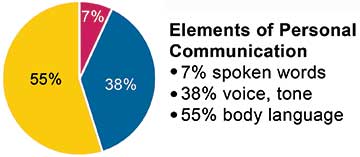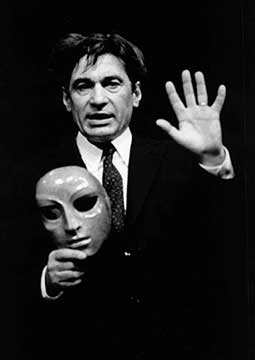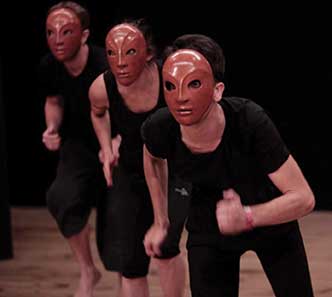Spatica Ramanujam
When we refer to someone as having good communication skills, an image of a persuasive speaker with impeccable English language often comes to mind. Good communication skills have come to be synonymous with ‘making a good impression’.
Many undergraduate programme syllabi are geared towards meeting this ‘requirement’ of the ‘professional world’. While almost all of the syllabi mention ‘confidence’, the question is, how does a student become a ‘confident’ communicator in a country like India where English language training dominates communication skills courses and students possess varying degrees of English language competency?
If we are to train students to be effective communicators, we must take into account their diverse competency levels in English and develop a pedagogical approach where this diversity becomes an asset, not an obstacle.
Professor Mehrabian’s* Communication Model challenges the popular notion of ‘effective communication’. He proposes that there are three core elements in the act of communication – Verbal (spoken words), Tone of voice, and Non-verbal (Body language, Facial Expressions) Out of these, body language accounts for 55 per cent, non-verbal 38 per cent, and verbal a mere 7 per cent. Language competency is just one of the elements of communication and the one with the smallest share in the proverbial communication pie. Despite this, the education system primarily relies on the written or spoken word.

Source: Professor Albert Mehrabian, University of California Los Angeles
A communication skills teacher needs to focus on non-verbal communication and not look at it merely as a tool that supports verbal communication. Communication is an instinctive act for humans and the teacher must create a safe space for this instinct to find expression. For this, it is first important to create an atmosphere of playfulness in the classroom. As Donald Winnicott mentions in his book, Playing and Reality, “It is in playing and only in playing that the individual child or adult is able to be creative and to use the whole personality, and it is only in being creative that the individual discovers the self.” Winnicott’s distinctive contribution to our understanding of human development, based on extensive clinical work with babies and young children as a paediatrician, is known and valued the world over. In Playing and Reality, he is concerned with the springs of imaginative living and of cultural experience in every sense, with whatever determines an individual’s capacity to live creatively and to find life worth living.
How then to create this sense of play in the classroom? Jacques Le Coq, a physical theatre teacher and founder of the Le Coq School in Paris referred to this sense of ‘playfulness’ as ‘folie’ (French). Inspired by the ‘Geometry of Movement’ and the ‘Poetry of Athletics’ in sports, Le Coq developed a unique physical theatre pedagogy called auto-course or self-course based on his passion and research into movement. Students at the Le Coq School undergo a journey of two years – during which they move along two parallel paths: Study of improvisation and movement technique and its analysis.

(Source: https://culturexchange1.wordpress.com/2017/01/24/jacques-lecoq-the-physical-revolution-of-theater/)
What is of particular significance is the work with the Neutral Mask, the first mask that the student encounters. The neutral mask is a practice to sharpen awareness of a performer to their body language and non-verbal communication. This interweaves their posture, breath, centre of gravity and relationship to space, to create a performer’s “presence” on stage.
The neutral mask shuts off the normal cues from facial expression and unfolds the communication beneath this. Participants find through observing the neutral mask the astounding fact that when worn by others, it seems as though the mask itself changes. The same mask on two different people can look radically different. We may be drawn to specific aspects of the mask, the mouth, the brow lines, or the length. Similarly, the audience may perceive a certain emotion or archetype arise when the mask is worn.
The mask allows for a state of openness and calm, where the student is encouraged to respond to the outside world becoming acutely aware of body, gesture, movement and rhythm. The face is hidden and the student is encouraged to bring alive the body to communicate.
Being a student of the LeCoq pedagogy in a theatre and performance context, I discovered a great sense of freedom of expression and an acute awareness of gesture and body language. I also began to trust my impulse as a performer.
As a Communication Skills teacher at Vidyashilp University, I have applied this pedagogical approach to teaching and facilitation in the classroom. The Communication Skills course at the University is mandatory for students across disciplines. The University has a rich diversity of students from rural and urban backgrounds. These students possess varying degrees of competency in English.
The LeCoq pedagogy enables learning to occur without language becoming a barrier, thereby giving students an opportunity to be their most expressive, confident selves. In the academic context, the pedagogy enables the learner to explore three pillars of expression that are important for any act of communication – Voice, Body and Imagination. This is achieved by students engaging in improvisation, imagination-based activities, and movement.
The improvisation activity, ‘Waiting for the Guest’, illustrates the role of body and imagination as key components of communication. The brief given to the students is as follows –
“You have been invited by the Chief Minister of your state for a dinner party. You don’t know what he/she looks like but you are excited to be invited to this event.”
Background and instructions for the students – The guests have never met each other before. Students are given a detailed ‘walk through’ from the entrance to the room of the house where all the food is laid out and where they must wait for the Chief Minister to make his/her appearance.
The students don’t know if they will be the first, second, third …nth guest, they find themselves confronted with a silent situation, not daring to speak, rather as if they are in a waiting room.”
(Improvisation exercise adapted from Le Coq’ Book, The Moving Body, World at is Movements chapter)
During this exercise in the classroom, the students employed different non-verbal communication techniques. These included facial expression, eye contact, body language and breath. Body language, for example, was effectively put to use to communicate restlessness and breath to communicate relief. These would have remained unexplored if verbal communication had been employed as the first pre-requisite to learn communication. It also placed all the students on an equal footing at the beginning.
Many students shared that they were acutely aware of the physical space, how their bodies were placed in the space, their distance from the audience and from fellow improvisers. They expressed that their imagination was stirred and guided them to truthfully communicate the geographical space they were inhabiting.
The students also shared that they struggled against the impulse to break into words and this constraint enabled them to communicate more with their bodies.
It is after this and many such activities to encourage non-verbal and imagination-led communication, that vocal activity was introduced to the students. They were given famous speeches to practice voice projection and clarity. This exercise, however, did not focus on their grammatical skills. It encouraged them to approach the text more as a bunch of ‘sounds’ and express the sound quality of each letter truthfully. It was only until after the exploration that they were told about the vowel and consonant sounds.
A BTech Data Science student who is not fluent in English shared, “The voice exercises helped me bring my full attention to pronouncing the words properly…I observed this also about a classmate who I could never hear speak clearly before who I found to be projecting his voice and speaking clearly as the course progressed….”
A Bachelors, Design (BDes) student who is fluent in English shared, “I struggled with body language and eye contact, but as the course progressed, I found myself getting more comfortable with speaking to a crowd and maintaining eye contact. Also, another element that really helped was the focus on breath, I used to talk really fast when I started and I was uncomfortable and awkward with silences, but the focus on breath helped me to space out my speech….I also could observe a change in my friend who was shy and couldn’t keep eye contact previously. Towards the end of the course I found her to be a much better communicator.”
These students also shared how the Communication Skills course helped them in other courses.
The BTech Data Science student shared, “I was able to use the storytelling module from the Communication Skills to design my presentation in the Foundation to Data Science (FDS) course “.
The BDes student shared, “Around the same time as this course, I had my first assessment presentation in design and was able to confidently present for that assessment. I used to be low on confidence previously but this course helped me be a confident presenter.”
Another significant feature of this pedagogy is giving feedback. The students became competent at giving each other feedback and developed skills on how to give feedback. The pedagogy highlighted the importance of feedback as a very relevant aspect of interpersonal communication. As Le Coq states in his book, The Moving Body, “My first response to any performer’s improvisation or exercise is to make observations, which are not to be confused with opinions….observations are made by the teacher surrounded by the students. While I am observing, I sense the students anticipating what I shall say. My job is to articulate the observation, but it must be shared by all. There is not much point after seeing an improvisation in a teacher saying, ‘that gave me pleasure’ or ‘I liked that a lot’. Different people will look at different things. But for an observation to be made one must pay close attention to the living process, while trying to be as objective as possible.”
The students had the opportunity to engage in peer feedback. This formed a part of their assessment when the ‘intention’ model of communication was introduced in class. Each pair of students were given a short two hander scene from a play where they had to portray a character’s unsaid intention of the character through non-verbal communication. The approach to understanding and playing intention was to be comfortable with and to lend meaning to silence before and after text, to and understand how silences and pauses form an integral part of meaning making. As Le Coq says, “words are born from silence.”
The assessments also centred on students being able to present content around topics like “an important event of my life” or “speak about an issue you are motivated by” which helped them speak about their own truth and develop sensitivity towards other people’s realities, backgrounds and contexts.
One of the students was able to confidently talk about ‘stigma around menstruation’ in Uttar Pradesh in her final presentation. From being shy and very soft spoken at the beginning, she was able to speak her truth confidently towards the end of the course.
The challenges of applying this pedagogical approach are also many. Not all students are able to overcome their inhibitions to engage in ‘folie’ that is required of many experiential activities/ improvisations. Such a practice based course needs exactly that…‘practice’. And however successful such a pedagogical approach maybe, it will fail to realize its learning outcomes unless it is reinforced in other courses, other domains.
The author is an Assistant Professor at Vidyashilp University. She teaches communication skills, leadership and teamwork skills and theatre. She is also a theatre practitioner and artistic director of the theatre company, Mukha Mugam. She has facilitated many arts integration programmes for educational institutions in India and abroad, providing focused theatre and storytelling training for teachers, students, and storytellers for over 10 years. She can be reached at spatica.r@vidyashilp.edu.in.

